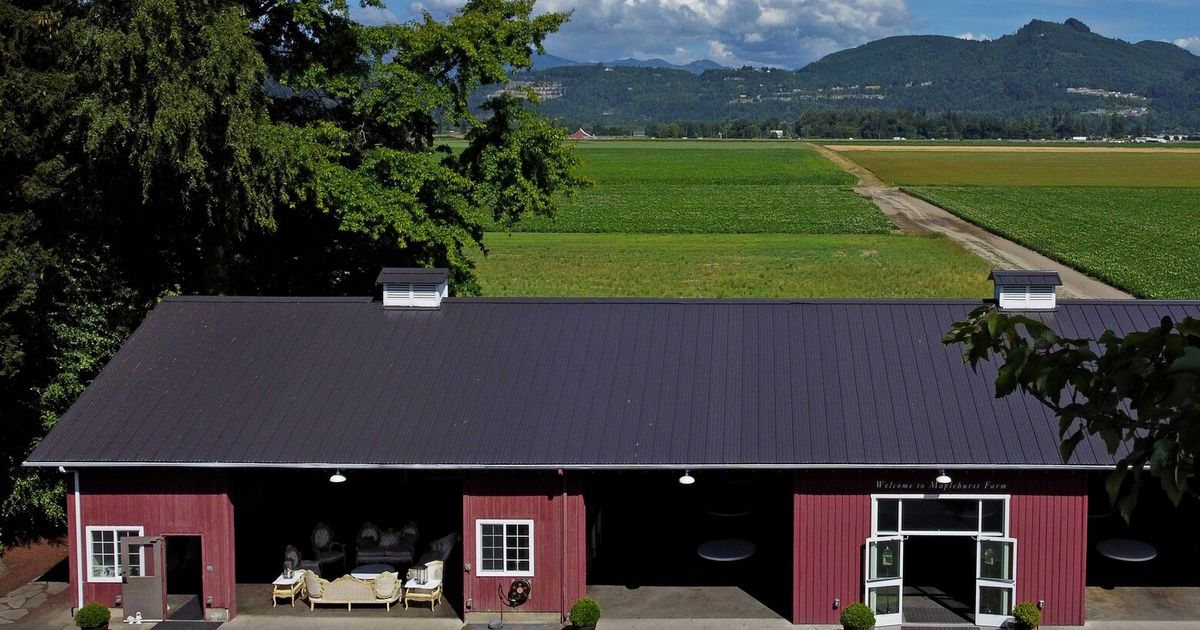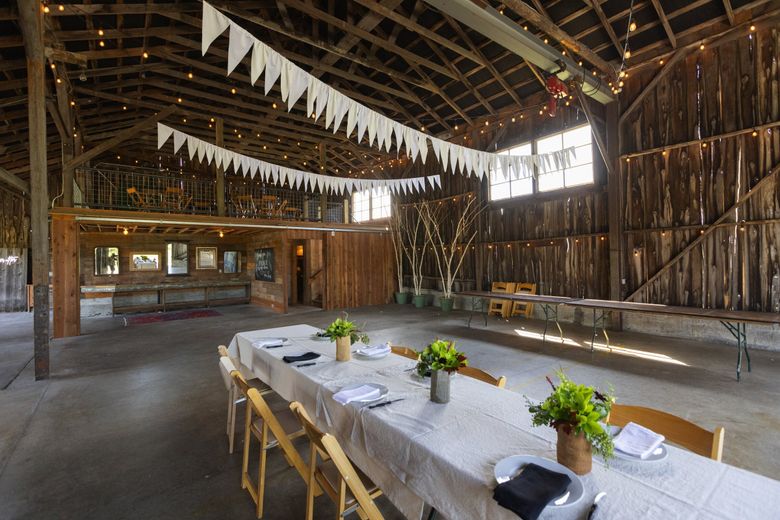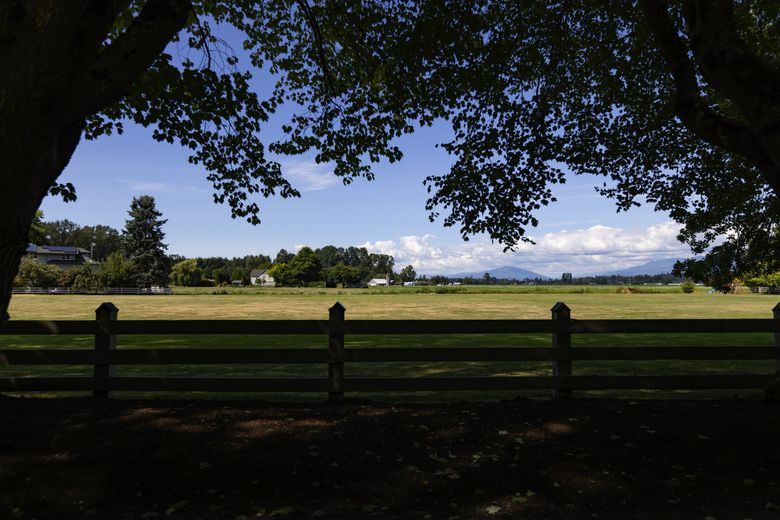Party could be over for weddings, events at Skagit County farms
Skagit County farm owners split over proposal to stop hosting weddings The Seattle Times


In Skagit County, Agricultural Land Use Sparks Debate over Farming and Events

In Skagit County, agricultural land use is taking center stage as the community battles over whether to prohibit farms from hosting weddings and other celebratory activities.
The county is considering a code change that would restrict agricultural land only to farming and limit agritourism. The proposed changes include prohibiting weddings on farms and requiring special permits for u-pick activities.
The proposed changes have sparked a heated debate among farm owners. One side argues for protecting agricultural activities, while the other side claims that the code changes would harm livelihoods and the community. This debate was further discussed during a three-hour public meeting last month.
Supporters of Farm Venues
- Jessie Anderson, co-owner of Maplehurst Farm, emphasized the economic benefits of farm venues, such as job creation and promoting knowledge and appreciation of the land and agriculture.

Concerns of Other Farm Owners
- Some farm owners argue that event venues interfere with their farming activities, such as being asked to avoid certain tasks like applying fertilizer due to potential odor issues for visitors.
Protecting Farmland in Skagit Valley
- Randy Good, a dairy farmer and former member of the county’s Agricultural Advisory Board (AAB), emphasized the need to protect farmland and expressed concerns that non-agricultural activities would interfere with farming.

The Proposal
The discussion on agritourism began in 2018 when a dairy farm filed an application to allow limited food service as a secondary use. The county’s Planning Commission identified agritourism as a high priority item and conducted studies and public evaluations before recommending the proposed code changes.

Small Farms and Business Concerns
- Small farm owners are concerned about the potential impact on their businesses, as events and weddings provide supplemental income for renovations and other expenses.

Preserving the Connection with Farmland
- Some farm owners worry that the proposed code changes would disconnect the public from farmland and impact future generations’ interest in preserving agricultural land.

Finding a Middle Ground
- There are calls for a middle ground that considers the concerns of both farm owners and event venues, such as ensuring venues are not adjacent to farm operations and using local farm products for catering.

Seeking Assistance for Small Operators
- Small operators are requesting assistance from the county to help them navigate the potential impact of the code changes on their businesses.

Continuing the Discussion
- The community has until August 17 to submit public comments on the proposed code changes. The Planning Commission will then vote on a recommendation to the Board of County Commissioners, who will make the final decision.
SDGs, Targets, and Indicators Analysis
1. Which SDGs are addressed or connected to the issues highlighted in the article?
- SDG 2: Zero Hunger – The article discusses the importance of protecting farmland and agricultural activities, which aligns with the goal of achieving food security and promoting sustainable agriculture.
- SDG 8: Decent Work and Economic Growth – The article mentions the economic benefits brought by farm venues, such as employment opportunities, which relates to the goal of promoting inclusive and sustainable economic growth.
- SDG 12: Responsible Consumption and Production – The article highlights the need to balance agritourism activities with agricultural production, reflecting the goal of ensuring sustainable consumption and production patterns.
- SDG 15: Life on Land – The article focuses on the preservation of farmland and the impact of land use changes on agriculture, which connects to the goal of protecting, restoring, and promoting sustainable use of terrestrial ecosystems.
2. What specific targets under those SDGs can be identified based on the article’s content?
- SDG 2.3: By 2030, double the agricultural productivity and incomes of small-scale food producers, particularly women, indigenous peoples, family farmers, pastoralists, and fishers. – The article mentions the concerns of small farmers who rely on event revenues and the need for supplemental income to sustain their businesses.
- SDG 8.5: By 2030, achieve full and productive employment and decent work for all women and men, including for young people and persons with disabilities, and equal pay for work of equal value. – The article discusses the economic benefits brought by farm venues, including employment opportunities.
- SDG 12.6: Encourage companies, especially large and transnational companies, to adopt sustainable practices and to integrate sustainability information into their reporting cycle. – The article highlights the need to balance agritourism activities with agricultural production, indicating the importance of sustainable practices.
- SDG 15.2: By 2020, promote the implementation of sustainable management of all types of forests, halt deforestation, restore degraded forests, and increase afforestation and reforestation. – Although not explicitly mentioned in the article, the preservation of farmland and agricultural activities contributes to the overall goal of sustainable land management.
3. Are there any indicators mentioned or implied in the article that can be used to measure progress towards the identified targets?
- Indicator 2.3.1: Volume of production per labor unit by classes of farming/pastoral/forestry enterprise size – This indicator can measure the productivity and incomes of small-scale food producers, as mentioned in the article.
- Indicator 8.5.1: Average hourly earnings of female and male employees, by occupation, age group, and persons with disabilities – This indicator can assess the progress in achieving equal pay for work of equal value, particularly in the context of employment opportunities provided by farm venues.
- Indicator 12.6.1: Number of companies publishing sustainability reports – Although not directly mentioned in the article, this indicator can reflect the adoption of sustainable practices by companies involved in agritourism activities.
- Indicator 15.2.1: Progress towards sustainable forest management – While not explicitly discussed in the article, this indicator can be used to monitor the overall progress in sustainable land management, including the preservation of farmland.
Table: SDGs, Targets, and Indicators
| SDGs | Targets | Indicators |
|---|---|---|
| SDG 2: Zero Hunger | 2.3: By 2030, double the agricultural productivity and incomes of small-scale food producers, particularly women, indigenous peoples, family farmers, pastoralists, and fishers. | Indicator 2.3.1: Volume of production per labor unit by classes of farming/pastoral/forestry enterprise size |
| SDG 8: Decent Work and Economic Growth | 8.5: By 2030, achieve full and productive employment and decent work for all women and men, including for young people and persons with disabilities, and equal pay for work of equal value. | Indicator 8.5.1: Average hourly earnings of female and male employees, by occupation, age group, and persons with disabilities |
| SDG 12: Responsible Consumption and Production | 12.6: Encourage companies, especially large and transnational companies, to adopt sustainable practices and to integrate sustainability information into their reporting cycle. | Indicator 12.6.1: Number of companies publishing sustainability reports |
| SDG 15: Life on Land | 15.2: By 2020, promote the implementation of sustainable management of all types of forests, halt deforestation, restore degraded forests, and increase afforestation and reforestation. | Indicator 15.2.1: Progress towards sustainable forest management |
Behold! This splendid article springs forth from the wellspring of knowledge, shaped by a wondrous proprietary AI technology that delved into a vast ocean of data, illuminating the path towards the Sustainable Development Goals. Remember that all rights are reserved by SDG Investors LLC, empowering us to champion progress together.
Source: seattletimes.com

Join us, as fellow seekers of change, on a transformative journey at https://sdgtalks.ai/welcome, where you can become a member and actively contribute to shaping a brighter future.







